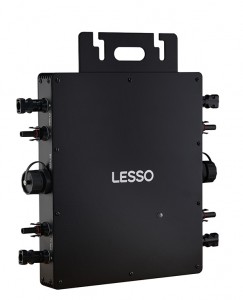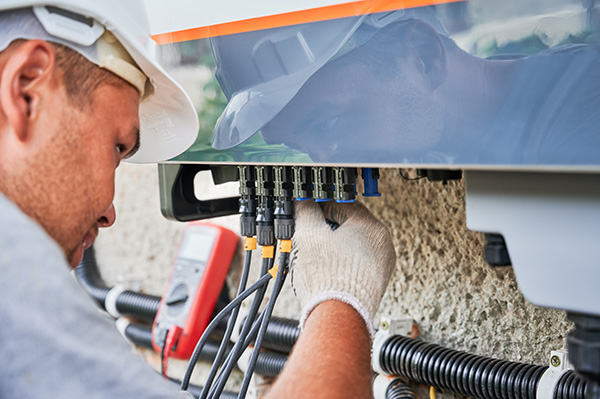In the home solar system, The role of the inverter is to change the voltage, DC power into AC power,which can be matched with the household circuits, then we can use, there are usually two kinds of inverters in the home energy storage system, string inverters and micro inverters. This article will be explain the principle of operation from the 2 types to make clear the advantages and disadvantages of the micro inverter, and I hope to help users to choose the right inverter for themselves!

1 What is string inverter?
In terms of installation, string inverter is usually connected to multiple PV panels in series string, then connected this string to a inverter, 3kw 5kw 8kw 10kw 15kw are the common use power in the residential application.
Advantages and disadvantages of string inverters
Easy to manage and Maintain: Usually in the household system PV panels connected to an inverter, in the panel unified management collection of PV panels of daily power generation, as well as electricity consumption and other data. Centralized management and maintenance with less number of quantities
Highly integration Good stability: String hybrid inverter Combined with the photovoltaic controller, inverter function as a whole, but also access to the energy storage battery, the excess electricity stored in the battery for power outages or night standby, and is equipped with diesel generator interfaces, turbine interfaces, etc., the formation of a variety of complementary energy systems, so that we take full advantage of the clean resources, to ensure the continuous supply of energy!

Lower cost:
String inverters are always cost effective and widely used globally in residential or commercial projects, In a same power , string inverters save 30% cost than a micro inverter system does.
Disadvantage:
Not easy to expand PV arrays: Before installation, the PV connected numbers and arrays have been fully calculated and due to there is limitation of the string inverter, it is not easy to add more panels to the system later on
One panel will affect all
In string system all The panels in series 1 string or 2. In this way, when there is any panel has shadows ,it will affect the all the panels. The voltage of all the panels will be lower than before , and the electricity generation each panel will be decreased when the shadows happens. To solve this problem ,some users will install the optimizer to improve the system with a extra cost.
What is a micro inverter
The most important part of Micro inverter solar system is a small grid tie inverter, which is usually below 1000W power, common power 300W 600W 800W, etc., at present lesso also introduced 1200W 2000W micro inverter, usually each PV panel connected to a micro inverter, each PV panel can operate independently.
Advantages and disadvantages of microinverters
Safety
each string of PV voltage is low, not easy to cause fire and other safety accidents.
More power generation
each PV panel operates independently, when one of the PV panels has a shadow, it does not affect the power generation of other PV panels, so the same PV panel power, the total power generation is higher than the string type.
Intelligent monitoring can be Panel-level.
Long life,
Micro inverter has a 25 years warranty while string 5-8years warranty
Convenient and beautiful
The inverter placed under the board, hidden installation, without the need for a extra machine room installation.
Flexible configuration, the micro inverter system can be 1-2 panels for balcony system or could be 8-18 panels for roof system, users can flexibly configure the quantity according to their needs.
Disadvantages:
High cost, micro inverter price cost a lot more than the string inverter with a same power, assuming a 5kw string inverter price of 580 U.S. dollars, to achieve the same power it takes 6 pcs of 800w micro inverter, the cost of 800 U.S. dollars, 30% cost higher.
Battery interface is not available
Grid-connected, There is no interface for energy storage batteries, the excess power can only be used by own house or sold to the grid







